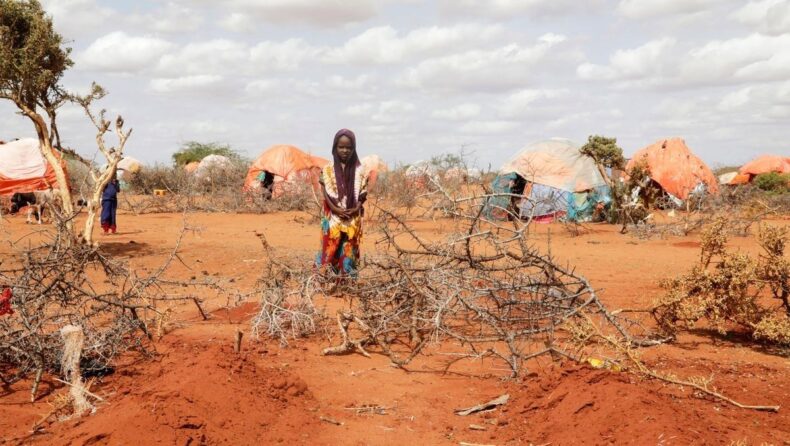The worst drought in 40 years is pushing Somalia to the brink. If it triggers a rare famine declaration, the militant group Al Shabab will also be to blame.
In Somalia, a combination of extreme weather and extremists is pushing the country toward its worst humanitarian disaster in over a decade. Five seasons of failed rains, linked to climate change, have affected 7.8 million Somalis, 300,000 of whom are severely malnourished.
Somalis Braced for Famine
Experts say that weather alone does not cause famine; it also takes people. The presence of Al Shabab, the extremists who dispatch suicide bombers and forcibly recruit children, and tax farmers, and prevent aid groups from reaching the worst-affected areas, is the biggest impediment to a massive relief effort. Somalis are waiting for aid experts to declare a famine in the coming weeks.

Many fear that history will repeat itself: Somalia’s last two great famines, in 1992 and 2011, which killed half a million people, were also the result of drought exacerbated by war. It has been a year since Somalia’s government declared a national emergency due to the drought, but aid workers say the situation has worsened.
On average, a severely malnourished child is admitted to a health facility for treatment every minute. Children suffering from measles, pneumonia, and other diseases that prey on the weak are crowding hospital wards. Kenya and Ethiopia are also affected by the two-year drought that has pushed 21 million people in the Horn of Africa to the brink of famine. However, the situation is most dire in Somalia, where a bleak confluence of factors has turned a crisis into a disaster.

According to scientists,
Longer and more frequent droughts are a result of climate change caused by emissions from countries far richer than Somalia, which emits virtually nothing. A decades-long cycle of international interventions in Somalia has failed to stabilize the country, despite billions of dollars in humanitarian aid and military support.
The election of Hassan Sheikh Mohamud as president this year fueled new hopes that Al Shabab would be pushed back. However, militants retaliated on Oct. Certainly, the international response has been faster and more organized than in 2011; aid organizations such as World Vision have capitalized on a decade of experience in towns such as Baidoa, where Al Shabab is no longer in control.

According to a USAID spokeswoman, the US has given $870 million in humanitarian aid to Somalia this year, far more than other donors. The forces that are causing Somalia’s misery are not going away. Meteorologists recently warned that model forecasts indicate the next rainy season, which begins in March, may also fail, ushering in a sixth consecutive season of drought.
Despite recent gains by pro-government militias in central Somalia, Al Shabab remains a formidable foe — even if their own fighters are also affected by the drought. Above all, we require peace. We cannot effectively combat famine in Somalia as long as there is conflict. More children will go hungry, and more people will die needlessly. And the cycle of insecurity is spreading dangerously.













